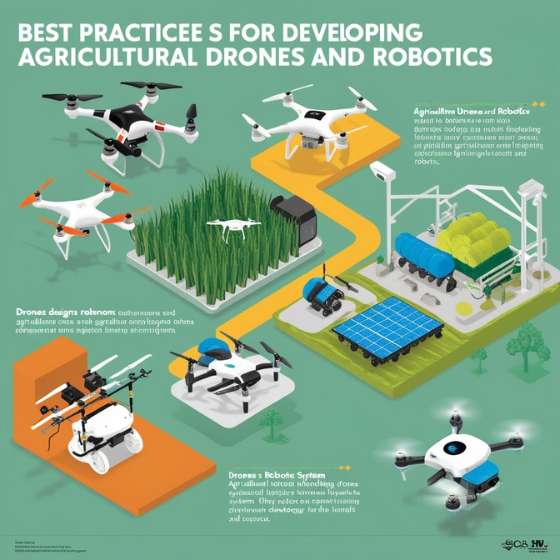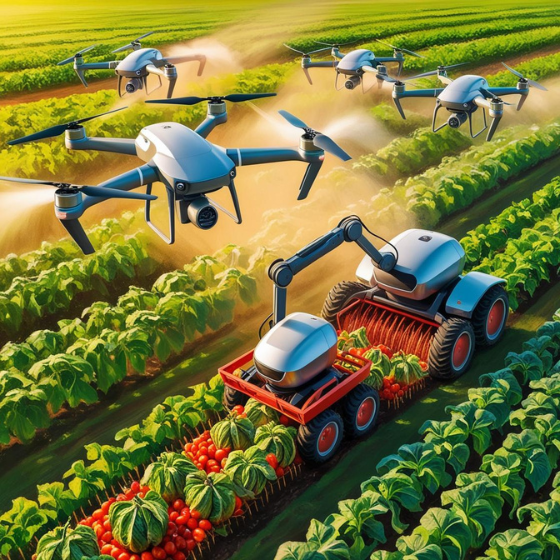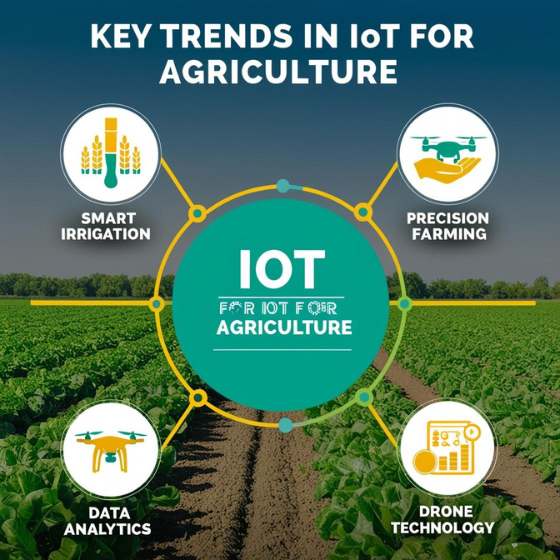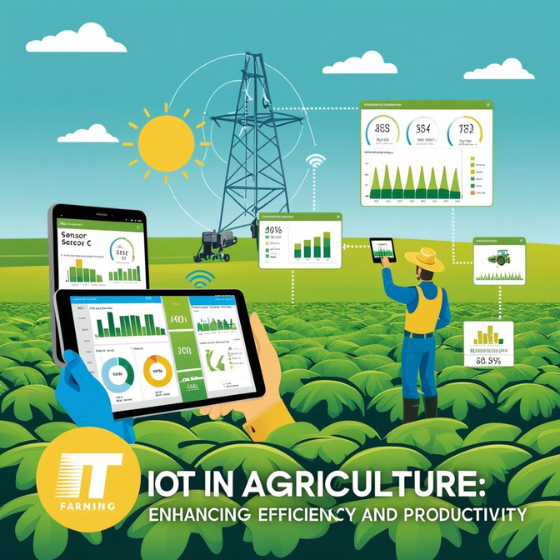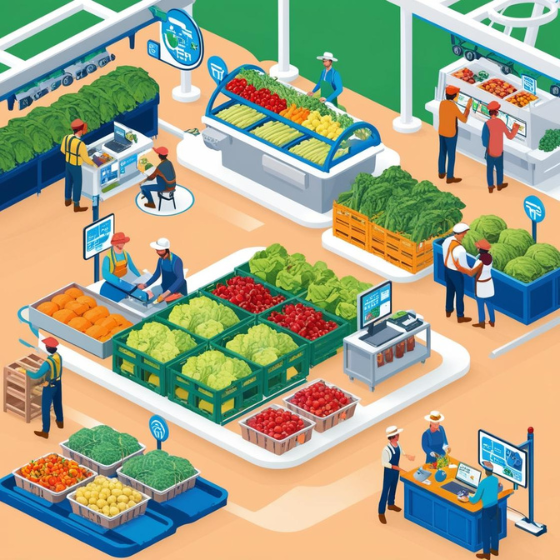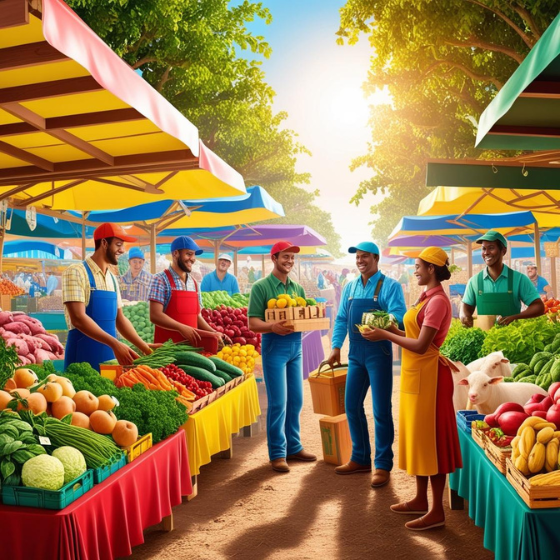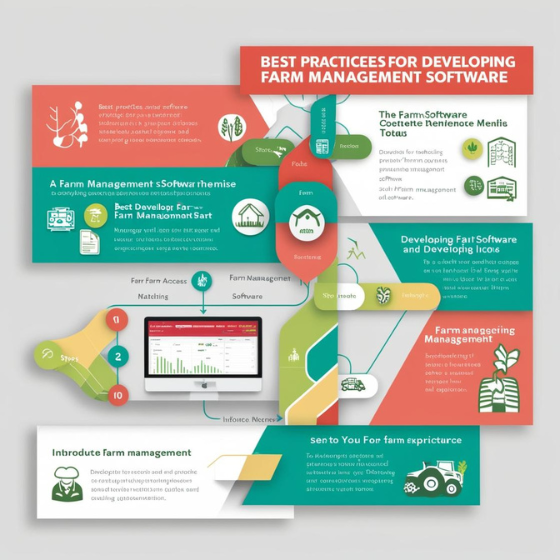Best Practices for Developing Agricultural Drones and Robotics
Agriculture is experiencing a significant transformation thanks to innovations in technology. Among these innovations, agricultural drones and robotics are at the forefront, reshaping the way farms operate. These technologies promise to increase efficiency, improve productivity, and make farming more sustainable. However, developing agricultural drones and robotics requires careful planning, testing, and integration. In this blog, we’ll explore the best practices for creating agricultural drones and robotics that can provide real value to farmers and the industry.
1. Focus on Precision and Efficiency
The main goal of agricultural drones and robotics is to enhance precision and operational efficiency. These technologies must be designed to perform tasks accurately, such as monitoring crops, planting, and even harvesting. The more precise the operation, the higher the output and the lower the waste.
- Data-Driven Insights: Drones equipped with high-resolution cameras and sensors gather vital data on crops. This data helps farmers understand soil conditions, crop health, and pest issues. By analyzing this information, farmers can make informed decisions about crop care and resource allocation.
- Automating Tasks: Robotics in agriculture should reduce the need for manual labor. Tasks like planting, weeding, and harvesting can be automated, saving farmers time and increasing productivity. For instance, autonomous tractors can work day and night without the need for human intervention, covering large areas efficiently.
By focusing on precision and efficiency, agricultural drones and robotics help reduce resource consumption, such as water, fertilizers, and pesticides, while increasing overall crop yields.
2. Seamless Integration with Existing Farm Infrastructure
When developing agricultural drones and robotics, it is essential to ensure that these systems integrate seamlessly with existing farm infrastructure. Rather than replacing existing tools, these technologies should enhance and optimize current operations.
- Farm Management Software (FMS): Drones and robotics should integrate with farm management software. This allows farmers to track inventory, monitor field conditions, and manage crop health. The data collected by drones can sync directly with the FMS, offering a comprehensive view of the farm’s operations.
- IoT Connectivity: By incorporating Internet of Things (IoT) sensors, drones and robots can connect with other farm devices. For instance, drones can communicate with robotic irrigation systems to ensure that crops receive the right amount of water at the right time. This connectivity promotes better coordination and data-driven decisions.
- Field Mapping: Drones and robots must be able to map and plan the farm’s field accurately. GPS systems and Geographic Information Systems (GIS) are critical for ensuring optimal coverage and resource allocation. With accurate mapping, drones can target specific areas that require attention, whether it’s a pest outbreak or a lack of nutrients.
By integrating seamlessly with current systems, drones and robotics can enhance existing farm operations rather than replace them entirely.
3. Prioritize Durability and Adaptability
Agricultural environments can be harsh. To succeed, agricultural drones and robots must be durable and adaptable to various environmental conditions. This ensures that the equipment can perform reliably, no matter the weather or terrain.
- Weatherproof Designs: Drones and robots should be built with weatherproof components. Drones, for example, need to operate in wind or rain, while robots must handle muddy fields and uneven ground. Durable designs will reduce maintenance costs and ensure consistent performance.
- Rugged Construction: Robotic systems designed for tasks like harvesting or tilling must withstand the challenges of the field. Reinforced parts, shock-resistant designs, and robust sensors ensure these systems work effectively over time. This helps avoid frequent repairs and increases the system’s lifespan.
- Customizable Solutions: Not all farms are the same, and neither are the tasks they perform. Whether a farm grows crops or raises livestock, drones and robots should be customizable to meet the unique needs of each operation. For example, drones used for spraying pesticides must be equipped with specialized nozzles, while robots that harvest crops need flexible arms.
Focusing on durability and adaptability ensures that agricultural drones and robotics can perform in diverse, real-world conditions.
4. Integrate Artificial Intelligence and Machine Learning
Artificial Intelligence (AI) and Machine Learning (ML) can significantly improve the functionality of agricultural drones and robotics. These technologies enable smarter, more autonomous systems capable of learning from data and adapting to changes in the environment.
- Automated Decision-Making: AI and ML enable drones and robots to make decisions without human intervention. For example, AI can analyze the data collected by drones and identify pest infestations or areas of a field that need irrigation. Once an issue is detected, the system can automatically take action, such as spraying pesticides or activating irrigation.
- Real-Time Adaptation: AI allows robots to adapt in real-time to their environment. A harvesting robot, for instance, can learn to identify the ripeness of fruits and adjust its picking strategy accordingly. This helps increase the efficiency of tasks like harvesting, as robots can operate in different field conditions.
- Data Optimization: AI and ML systems can analyze vast amounts of data from drones, robots, and other farm devices. These technologies can optimize operations by suggesting planting schedules, irrigation plans, and fertilization strategies based on data trends, weather conditions, and crop performance.
Integrating AI and ML enables agricultural drones and robotics to make smarter decisions and continuously improve their performance.
5. Ensure User-Friendliness and Accessibility
For agricultural drones and robotics to be widely adopted, they must be user-friendly. Farmers need systems that are easy to use, even if they don’t have extensive technical knowledge.
- Intuitive Interfaces: Drones and robotics should have simple, intuitive interfaces. Dashboards and control systems must be easy to navigate, enabling farmers to monitor and control their equipment with minimal training. Mobile apps also allow farmers to operate these systems remotely, making them more accessible.
- Remote Monitoring: Drones should allow remote control, enabling farmers to fly them and monitor data through mobile devices or desktop applications. Similarly, robotic systems should offer remote diagnostics, helping farmers troubleshoot issues without needing a technician on-site.
- Training and Support: While the technology should be user-friendly, farmers may still need support during the adoption phase. Providing clear instructions, online training programs, and responsive customer service will ensure farmers can maximize the benefits of agricultural drones and robotics.
By focusing on ease of use and offering continuous support, developers can help farmers integrate these new technologies into their operations smoothly.
Conclusion
The development of agricultural drones and robotics has the potential to revolutionize the agriculture industry. By improving precision, increasing efficiency, and enabling data-driven decision-making, these technologies can help farmers grow more with fewer resources. However, developing these systems requires a focus on integration, durability, AI-driven insights, and user-friendliness.
As the agriculture industry continues to embrace technological advancements, now is the perfect time to explore the opportunities these innovations bring. Ready to take your farm operations to the next level? Reach out to Sodio today to discover how our cutting-edge solutions can help enhance your farm’s productivity and sustainability.
